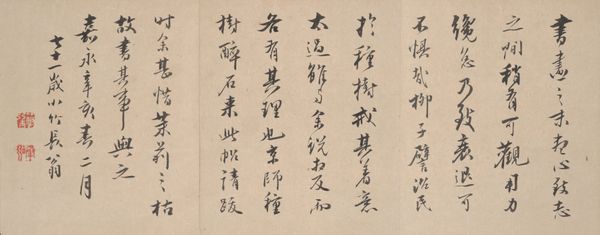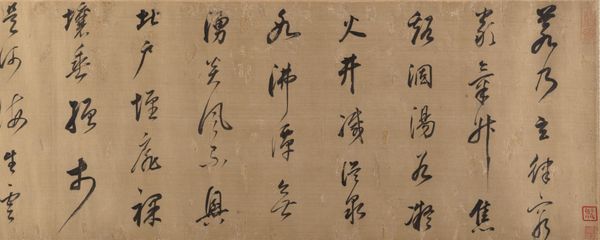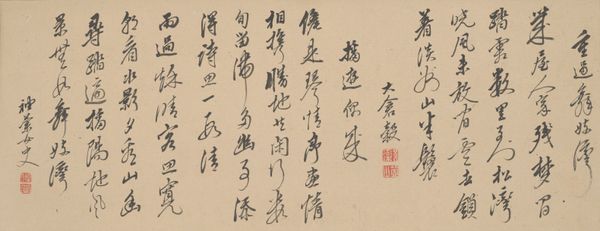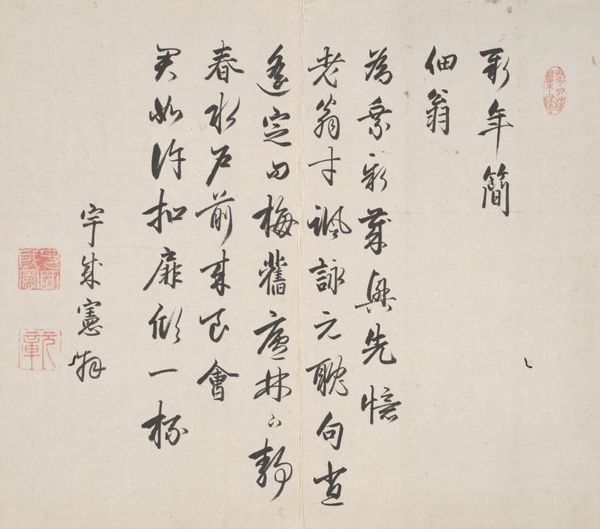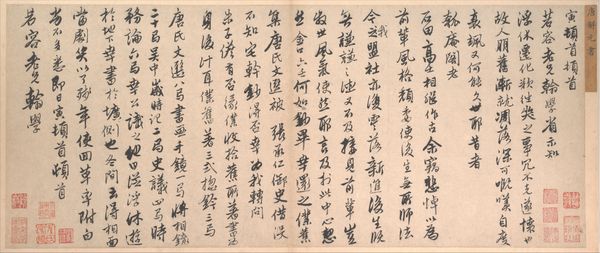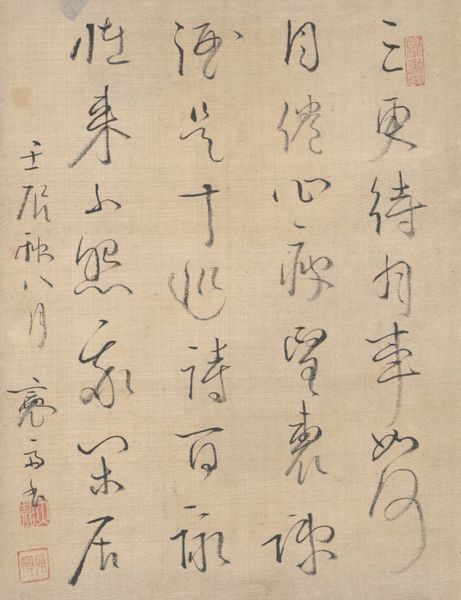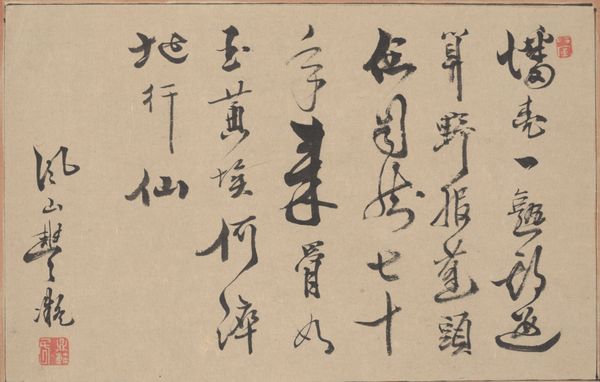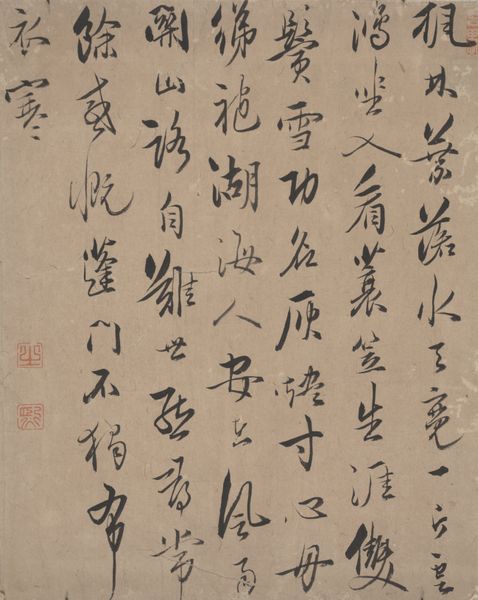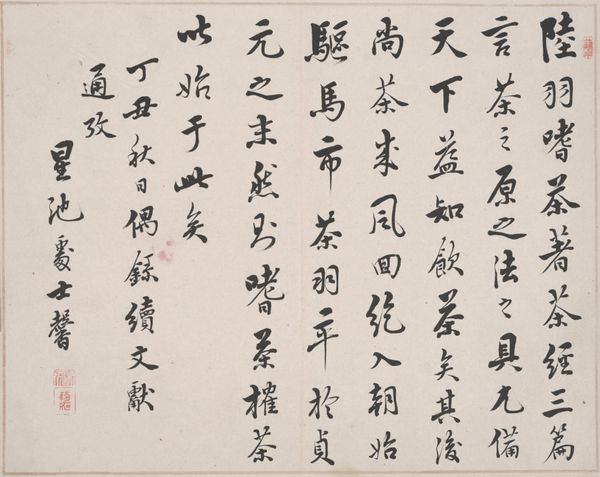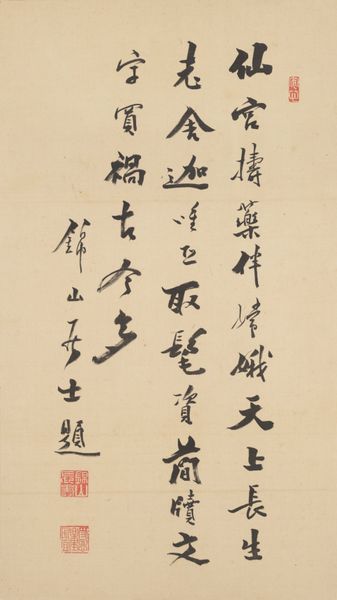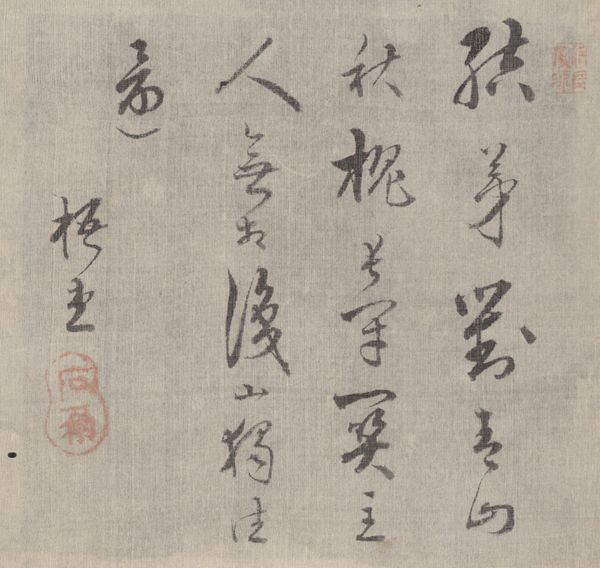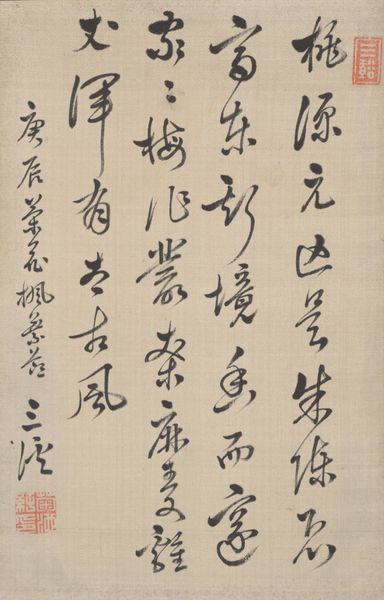
drawing, paper, ink-on-paper, hanging-scroll, ink
#
drawing
#
asian-art
#
paper
#
ink-on-paper
#
personal sketchbook
#
hanging-scroll
#
ink
#
calligraphy
Dimensions: 7 1/2 × 18 in. (19.05 × 45.72 cm) (image)40 15/16 × 19 1/8 in. (103.98 × 48.58 cm) (mount, without roller)
Copyright: Public Domain
Curator: Take a moment to consider "No Footprints," a hanging scroll attributed to Gion Nankai, dating back to around the 18th century. Executed in ink on paper, this artwork beautifully showcases the art of calligraphy. Editor: My first impression? It's like a captured breath—a silent poem. The characters cascade down the scroll with a gravity that feels both deliberate and spontaneous, like watching leaves fall in slow motion. Curator: Indeed. Calligraphy, especially in East Asian traditions, goes far beyond mere writing; it embodies the spirit and emotional state of the artist. Nankai's brushstrokes here speak volumes. Note how each character is not just a symbol, but also a dance, echoing centuries of philosophical and aesthetic values. Editor: A dance, absolutely! I see defiance there too, don't you think? The characters seem to push against the expected grid, embracing asymmetry, leaning into the beauty of imperfection. It’s more than communication, it feels like a revelation, the raw feeling finding its form. Curator: That defiance could stem from the era's sociopolitical landscape; artists often expressed dissent through subtle visual means. Each stroke's weight and direction carries cultural and personal meaning. The placement, the interaction, even the negative space plays a significant part in the artwork's narrative. Editor: It's all connected then! Which really makes me wonder, what narratives do these characters tell for those of us who can’t understand the language? Does the visual language take over? Because for me, the arrangement has its own powerful voice, a raw beauty. Curator: Regardless of one's ability to decipher the written text, the artistic merit lies in the way this artist brings into being the concepts of tradition and, at the same time, revolution. You become keenly aware of what's happening. Editor: Exactly. A feeling lingers...quiet awe. I think it's wonderful when artwork can achieve that. It proves that intention will be understood if expressed correctly.
Comments
No comments
Be the first to comment and join the conversation on the ultimate creative platform.
